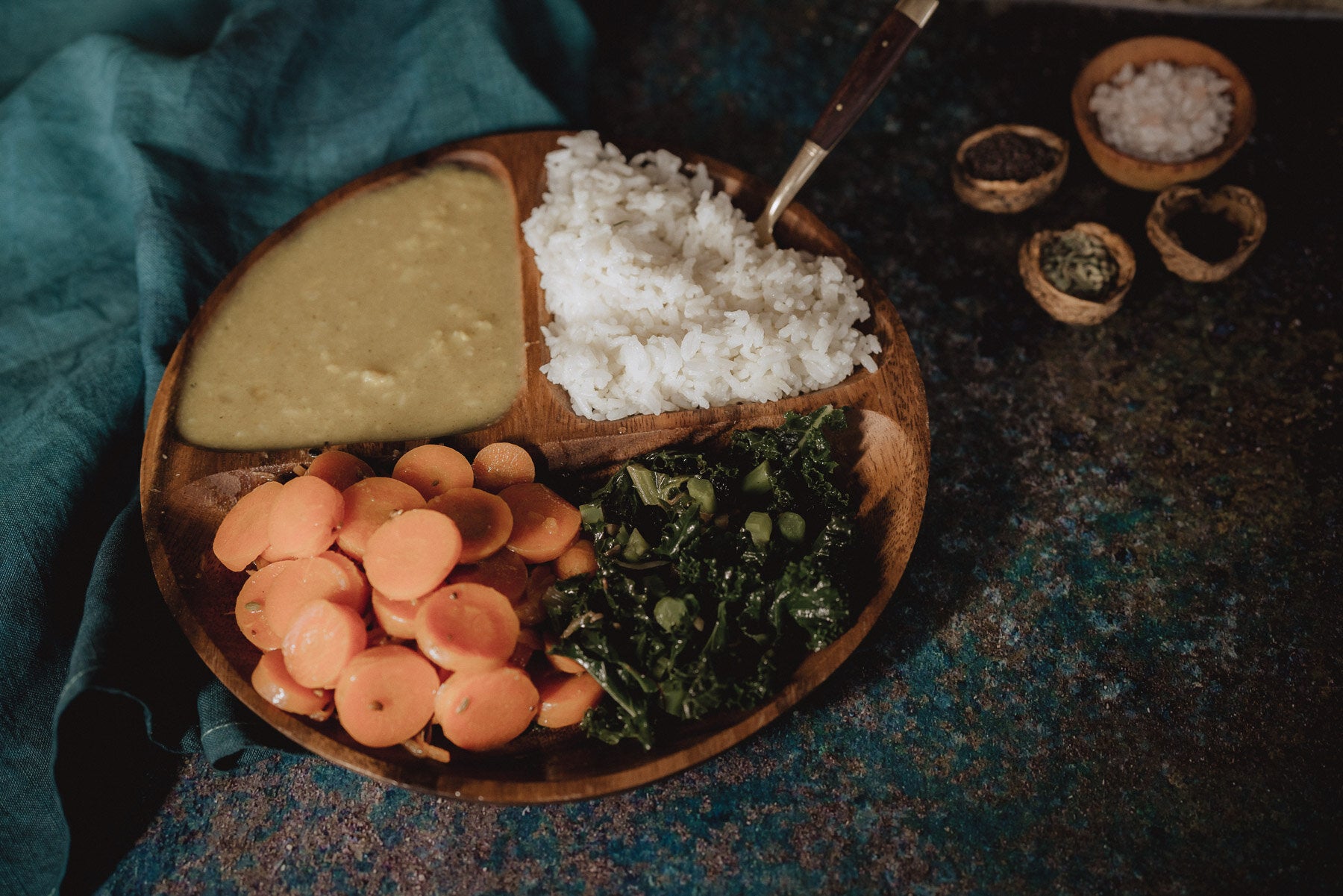
If you want to experience lifelong health, make vata dosha your friend.
When vata dosha is out of balance, it creates irregular or painful menstruation, dryness, anxiety, fear, a scattered mind, joint pain, gas and constipation. With high vata, it’s difficult to make a decision, or stick to anything for long, or slow down and enjoy life.
If you’re experiencing any of these symptoms, it’s time to calm vata dosha so that you can have a richer, more fulfilling experience of life.
Here’s a primer on the doshas:
The doshas, or three vital energies (vata, pitta, kapha) exist everywhere in nature and within you. Understanding the doshas illuminates how internal and external factors influence your health and well-being.
When people are new to Ayurveda, they will often think that they have only one dosha, but actually, each individual’s constitution is composed of all three doshas, just in differing amounts.
While any dosha can become imbalanced at any time, the dosha that is most prominent in you is the one that is more likely to go out of balance.
When you understand the dietary and lifestyle factors that cause imbalance, you can make different choices in order to feel your best.
When you are feeling imbalanced overall, excess vata is often the reason. The qualities of vata dosha are light and mobile and its function is movement. This means vata will go out of balance more easily than the other doshas. And because of the mobility of the air element, imbalanced vata will pull the other doshas out of balance causing greater disturbance.
Vata imbalance is very common due to modern lifestyles.
High-speed travel, eating dry or cold foods (toast, chips, smoothies), constant mental stimulation, doing more than one thing at a time, and excessive use of screens that flicker (television, phones, and computers) all increase vata dosha.
Seasonal transitions also influence doshic balance. Autumn is vata season when air and ether elements are dominant. Inherent in these elements are the qualities of cold, dry, mobile, and light. We experience them in nature, with leaves changing color and falling in the wind, stripping down trees to their skeletons. These changes in the environment will impact the mind and body, particularly if there’s already imbalance present. This is why people will often come down with cold and flu when the season changes.
How to calm vata dosha
There are two main concepts to understand if you are looking to heal with Ayurveda.
-
First is the principle of “like increases like, the opposite brings balance.” By understanding the qualities you are taking in through food and living and the results you are getting, you can take healing into your own hands and consciously bring in the opposite qualities in order to move toward balance.
-
Secondly, food is the best medicine. Food provides prana, which is what gives you the energy to live. Shift your focus away from trying to fix symptoms with supplements, herbs, or medications and take a holistic approach to healing. Focus first on eating the best high-quality foods to calm and ground vata. And when vata is calm, you’ll find that you are more creative in the kitchen and can enjoy the cooking process.
A vata-balancing diet
Rather than looking at a vata-calming diet as a one-time fix, welcome these principles into your everyday eating practices. When you eat like this on a daily basis, it provides stability for vata dosha that leads to long-term positive results.
Diet Guidelines to Calm Vata:
-
Regular mealtimes: Remember that everything you do has an effect on the doshas. So how you eat is as important as what you eat. Have 3 conscious meals per day at regular intervals (4-6 hours apart). Irregular meal times imbalance vata dosha and agni, your digestive fire. Sit down and make it a time just for eating, enjoying consciously without distractions – no television, reading or tough conversation - and chew your food until it is liquid. Your agni will improve and you will keep vata calm and happy.
-
Warm, moist, cooked food: Vata’s cold and dry qualities are balanced with warm and moist foods. Enjoy porridge or stewed apples for breakfast, gently cooked to awaken prana. Eating warm foods and drinks will also support agni.
-
Nourishing foods, like whole grains and augmenting vegetables: When vata is aggravated, make sure you include foods that are more dense and grounding to counter vata’s lightness and mobility. Make a balanced bowl that includes naturally sweet augmenting foods (eg rice with kabocha squash or sweet potatoes) for lunch or dinner. It also supports agni.
-
Ghee: Most oils are wonderful for calming vata, but ghee (or liquid sunshine, as we like to call it) is the most effective for balancing and supporting agni. It lubricates your skin and organs and brings the nutrients from food deeper into your tissues.
-
Spices: Digestive disruption is common when vata is high. Spices like cumin, fennel, mustard seed and asafoetida help your digestive organs do their work and prevent gas. They also happen to make your food delicious. Use them in moderation to support agni and calm vata.
-
Warm water throughout the day: Stay hydrated to avoid excess vata from drying you out, but stay away from iced drinks. Ice constricts your digestive organs in the same way a cold shower constricts your skin. Instead, take a thermos of warm water out with you and enjoy ½ cup each hour throughout the day. But be aware of drinking too much water as it will aggravate vata and stress the kidneys, organs governed by vata.
If you are looking for further support to discover, assimilate and incorporate Ayurvedic & Yogic principles into your life, join us in Agni Therapy. The practices offered in this program will calm vata and provide a holistic foundation for living, so that you can feel fulfilled, and thrive.
Visit our Ayurveda Lifestyle page for kitchen essentials
